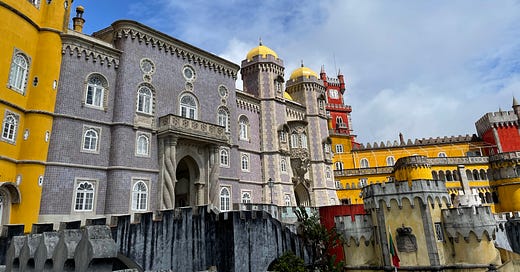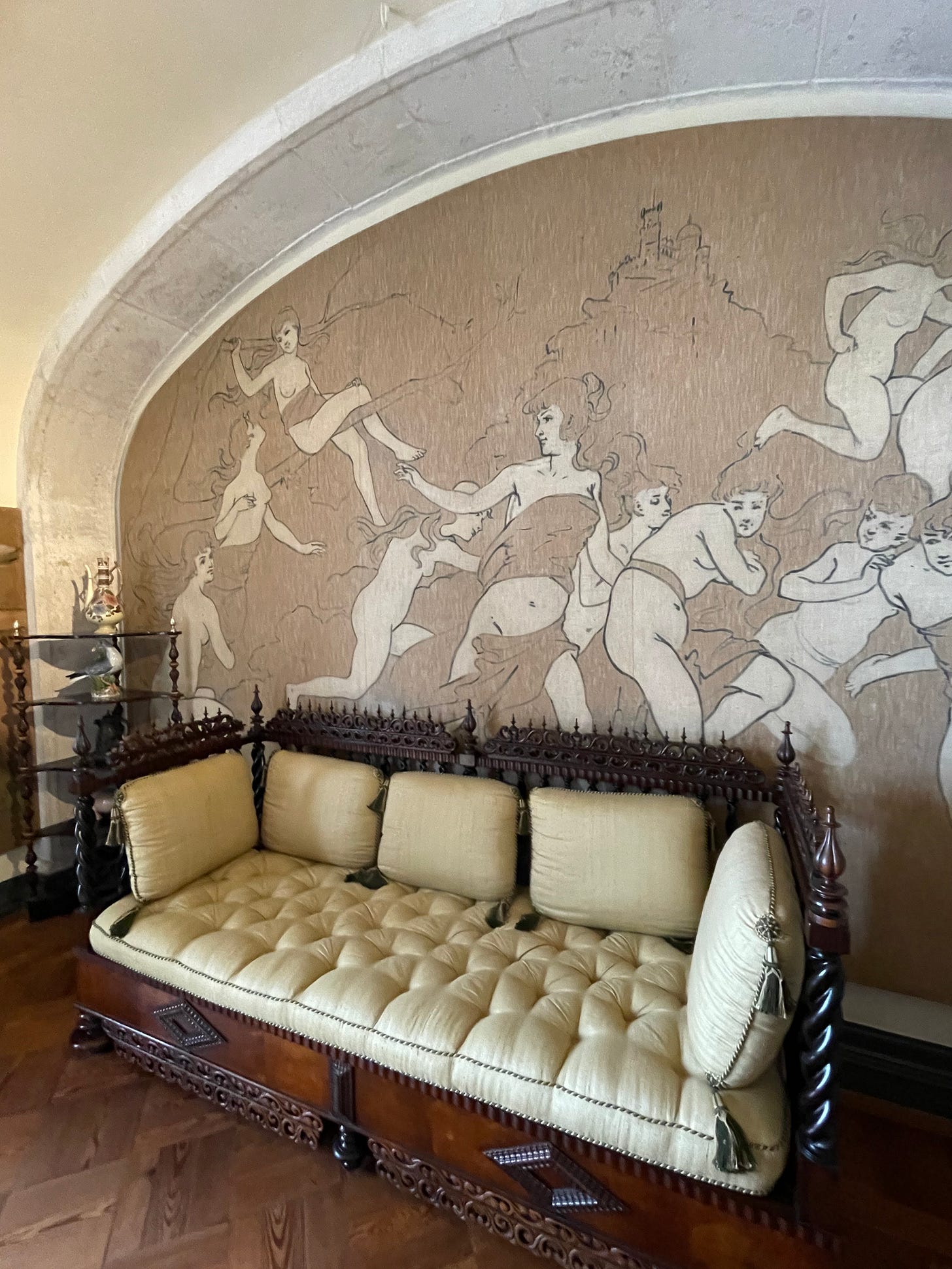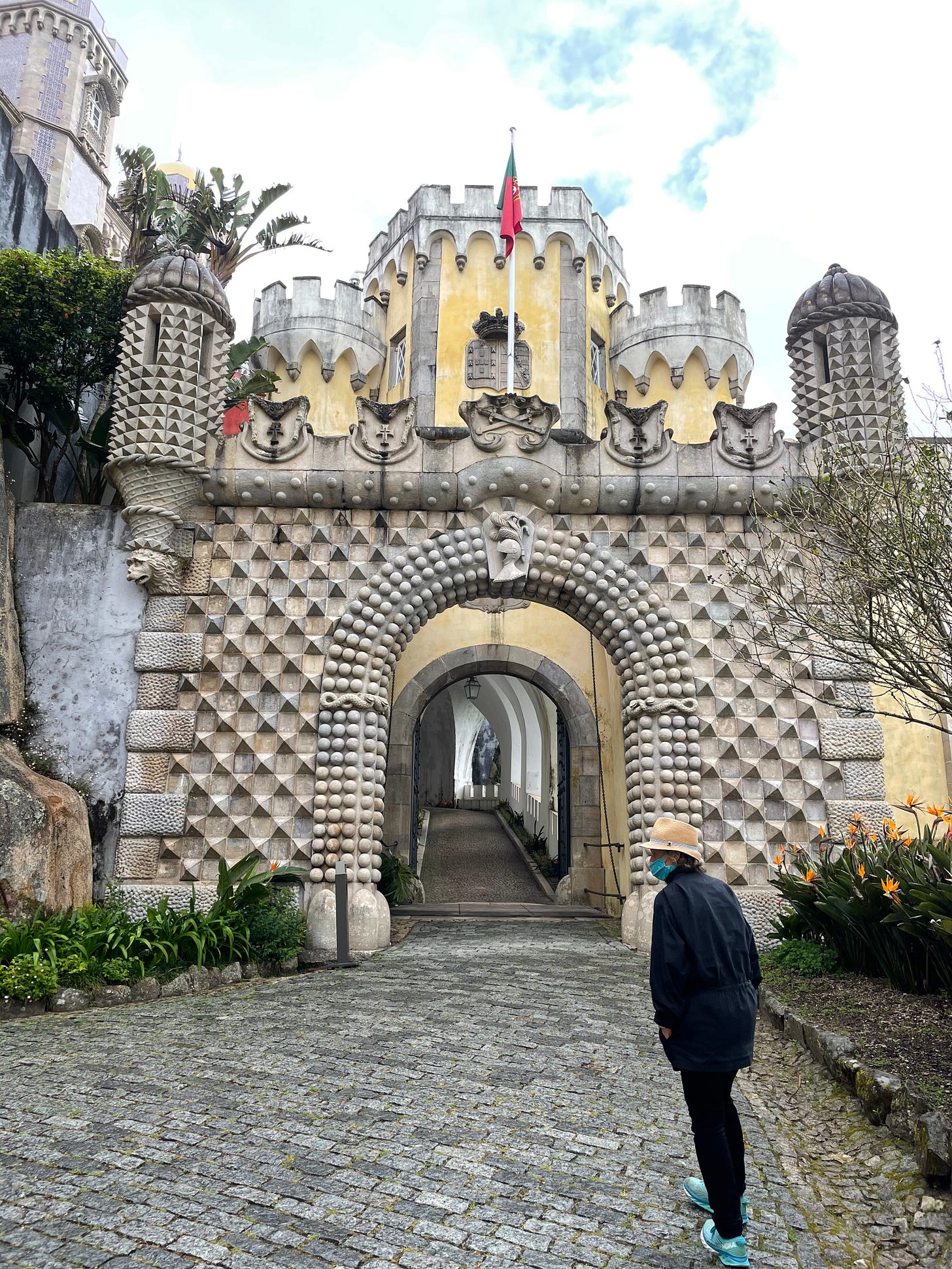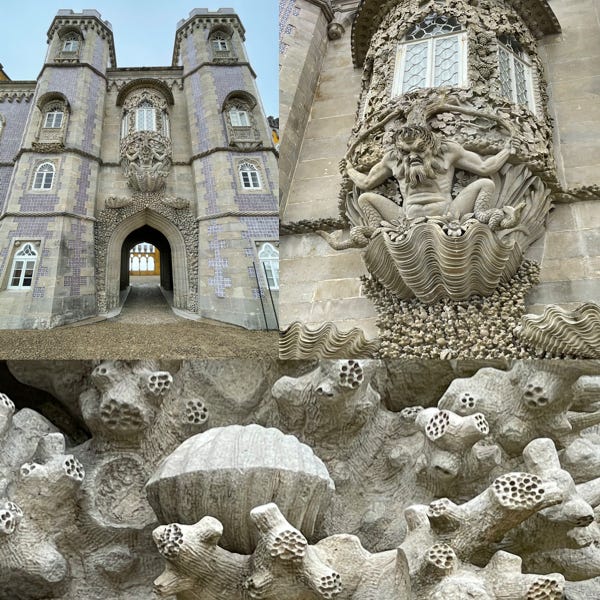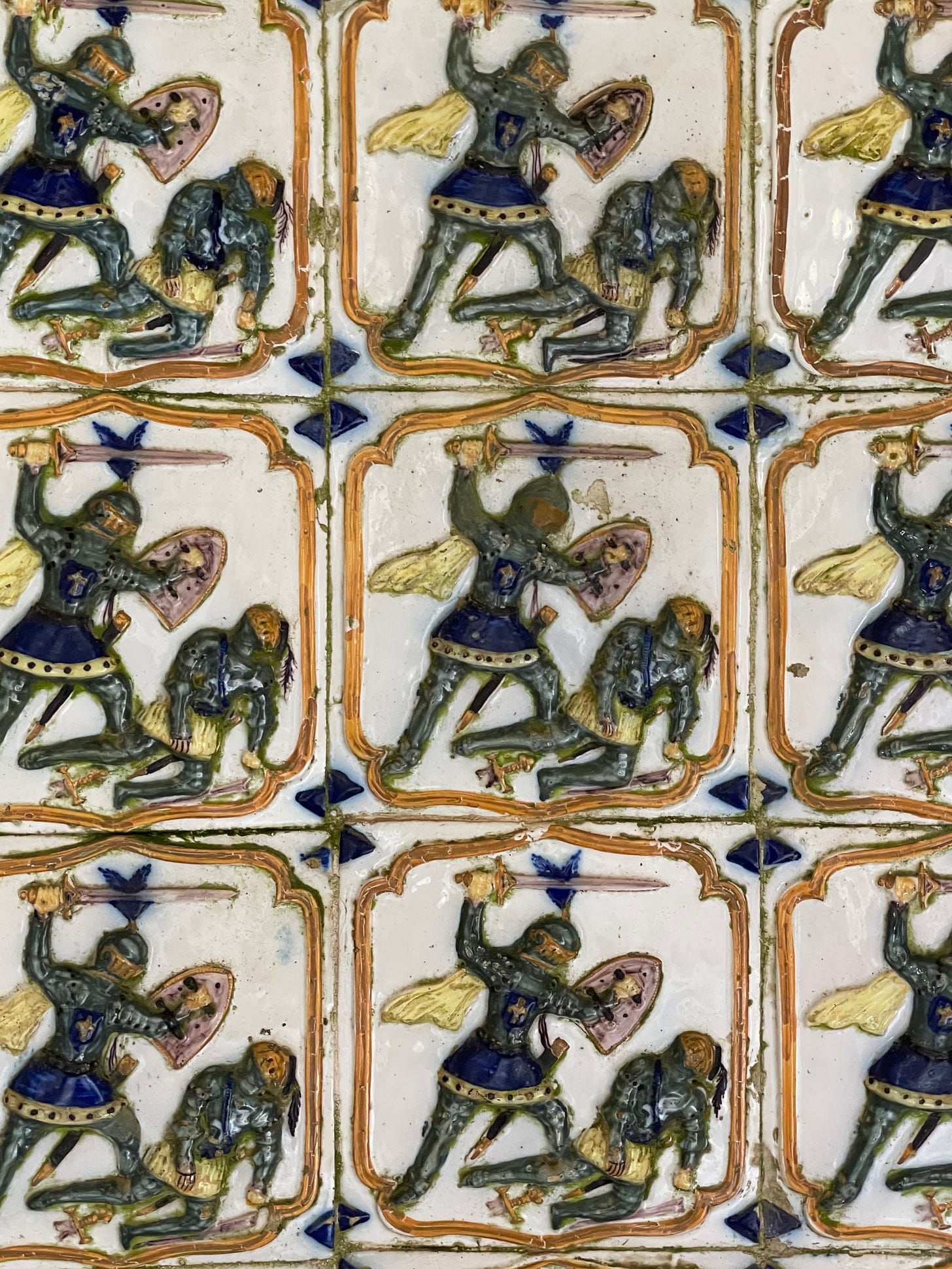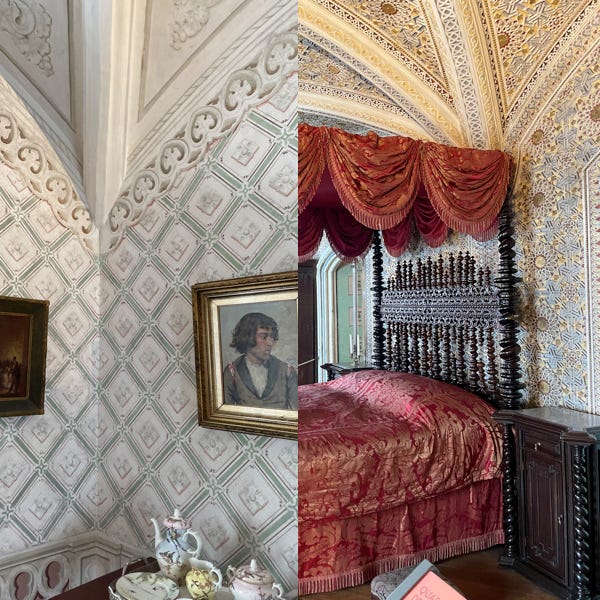After we left the Castle of the Moors we drove a few minutes up the hill to Pena Palace. If you have been with me from the start, you may recall seeing a photo of the palace taken from a distance.
History
It was the 12th Century when King Manuel I ordered that a monastery be built near the chapel, Our Lady of Pena. The Royal Monastery of Our Lady of Pena was run by the Hieronymite Order for nearly 600 years. They even remained active despite the 1755 earthquake that left the building in ruins. But male religious orders were dissolved by decree in 1834.
Portugal thus terminated the State sanction of masculine religious orders and nationalized the lands and possessions of over 500 monasteries. The new government hoped to distribute land and goods in the hands among the poorer landowners, but there were few who could buy. -Wikipedia
Shortly thereafter, Queen Maria II married a prince (Ferdinand II) on whom the title of King-consort was bestowed. The King-consort fell in love with Sintra and in particular this site. What began as a restoration project to build a summer residence got a bit out of hand. Considered to be among the most cultured men of Portugal, Ferdinand II spoke seven languages and had studied art and music extensively. He became known as the King-artist, and his work is visible in the Palace today.
Some Entrance
It is hard to imagine the manpower required to build or rebuild such a place. Just getting the materials to the site is hard to imagine. But when you see the carvings, particularly those that frame the first (yes there are more) entrance of the palace one is gobsmacked.
Denise commented on the small draw bridge, and lack of moot. Our guide pointed out the spots from which hot oil could be poured on potential intruders. After walking about 100 yards, we encountered the second entrance.
At every turn, you also are overwhelmed by the tile. While we certainly appreciate Portugal’s azulejo tile, after a few months here we have “come to expect it”. However, the quantity of the tile and in particular the rich, dimensional tile was quite impressive.
Inside Highlights
The interior of the Palace has been lovingly maintained. As you walk through the bedrooms of the maids-in-waiting, and secretaries you notice that status brings certain upgraded features. In some rooms the cornices and decorative ceilings are plaster, some painted plaster, other carved wood then carved stone. On all the walls, you notice that patterns create the illusion of wallpaper, and tromp l’oeil fools the eye to see cornices where there are none.
You can easily spend 2 to 3 hours touring the Pena Palace. There are bathrooms, as the palace had early plumbing, and dining rooms, grand meeting rooms, and a huge kitchen. If you want to see more photos, check out my Facebook page. Or better yet, add a visit to your bucket list.
As it was now 1300, we had a lunch date overlooking the ocean. We needed nourishment before our afternoon adventure, which I will share tomorrow.

